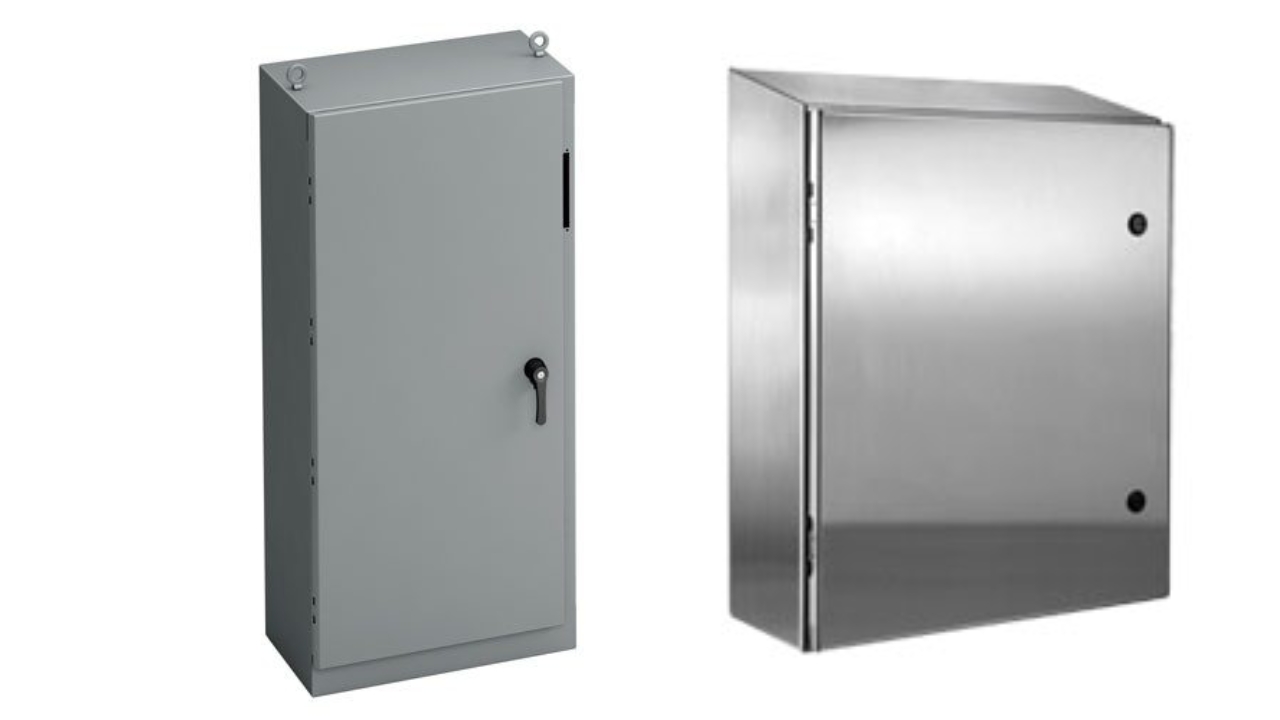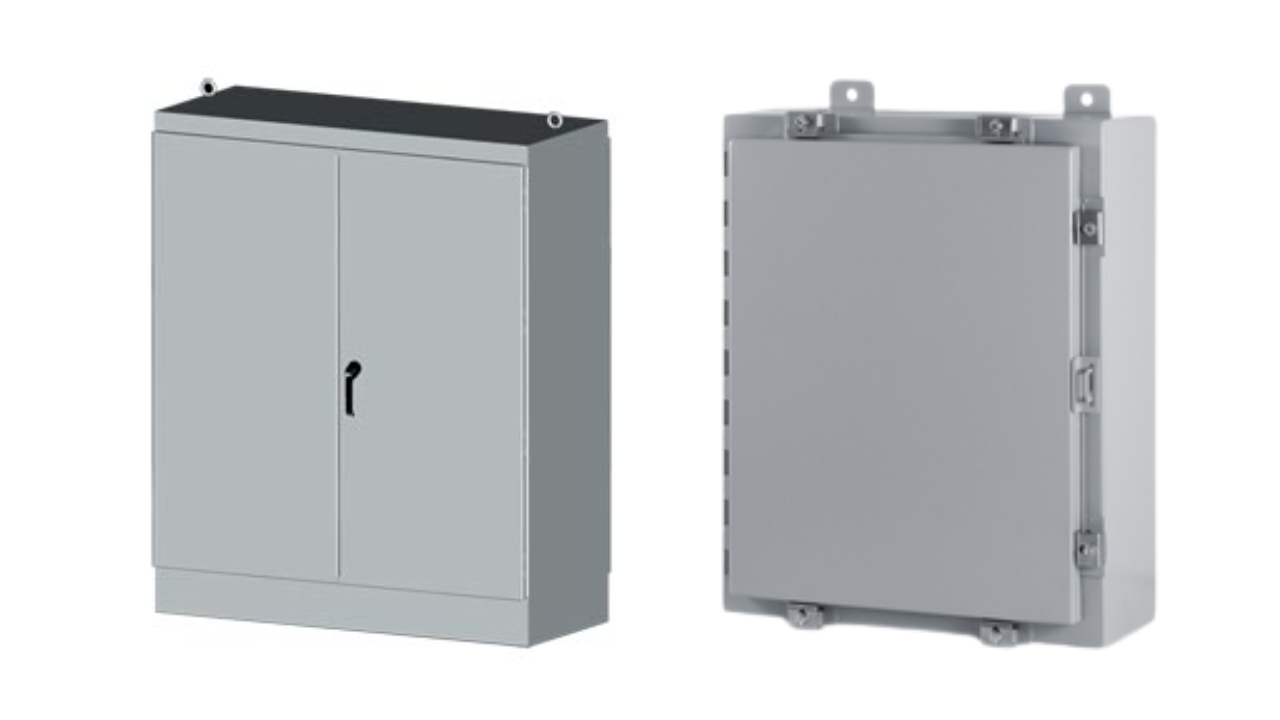Understanding the differences between NEMA 12 vs NEMA 4 is important when selecting enclosures to protect electrical parts in an industrial setting. To ensure the best results, you will need to know which type of enclosure prevents dust, water, and other hazards.
What are NEMA 4 Enclosures?

Your NEMA 4 enclosures offer protection against dust, dirt, and water for electrical components in harsh, industrial, and outdoor environments. Protects against rain, hose-directed water, and icing and provides reliability under wet and corrosive conditions. Applications requiring electrical housing with very good weather resistance and durability, such as industries, require these enclosures.
What are NEMA 12 Enclosures?

Your NEMA 12 enclosures are dust, dirt, and non-corrosive liquid-resistant and guard electrical components used in indoor industrial settings. They prevent dripping water from damaging sensitive equipment, as well as prevent debris from damaging the equipment. These enclosures provide reliable operation in controlled environments in which moisture and contaminating elements are concerns.
Key Differences Between NEMA 12 and NEMA 4 Enclosures

1. Water Protection
A key difference between NEMA 12 vs NEMA 4 is water protection. Your NEMA 4 enclosures are so designed to withstand direct exposure to water (rain or splashing or hose-directed) but are not necessarily immune to dust. Their sealed construction prevents moisture ingress and therefore electrical components are safe in wet conditions. Non-pressurized liquid drips or light splashes are to be protected in NEMA 12 enclosures which are intended for dry indoor use.
2. Dust & Dirt Resistance
NEMA 12 vs NEMA 4 are both enclosures proven to protect the electrical parts from dust and dirt while ensuring safety. A higher-rated NEMA 4 enclosure also has enhanced sealing for indoor as well as outdoor use where windblown dust, dirt, and debris are present. In contrast, your NEMA 12 enclosures are generally utilized in factories, warehouses, and automation environments where solid protection against dust in the air is required.
3. Material & Design
The differences between NEMA 12 vs NEMA 4 have to do with the material and how well it is designed to ensure both the durability of the device and its applicability to the project. Your NEMA 4 enclosures are built of corrosion-resistant materials including stainless steel, aluminum, or polycarbonate with long-term outdoor and washdown performance. In comparison, NEMA 12 enclosures are generally made of powder-coated steel to provide good protection from dust and non-corrosive liquids in indoor applications. But they have no waterproof sealing and no rugged construction for outdoor or high moisture environments.
4. Applications
For use in industrial indoor settings like factories, warehouses, and automation systems, NEMA 12 enclosures are designed to be resistant to dust, dirt, and non-corrosive liquids. They are not suited for wet conditions and shield electrical components in controlled environments. While your NEMA 4 enclosures are meant for outside, washdown, and industrial rugged environments, they have superior protection from rain, hose-directed water, and harsh contaminants.
Comparison Table
| Feature | NEMA 12 | NEMA 4 |
| Water Resistance | Protects against light splashes and drips only | Withstands rain, splashing, and hose-directed water |
| Dust Resistance | Prevent dust, dirt, and airborne debris from affecting | Dust protection superior to that of standard enclosures |
| Material | Powder coated steel | Stainless steel, aluminum, or polycarbonate |
| Corrosion Resistance | Limited, not designed for harsh conditions | High, designed for outdoor and washdown areas |
| Applications | Factories, warehouses, automation systems | Outdoor, washdown, food processing, industrial sites |
| Outdoor Suitability | Not suitable for outdoor use | Designed for outdoor and rugged environments |
| Ideal Industries | Manufacturing, washdown electrical enclosures, automation | Water treatment, agriculture, marine, and food processing |
Factors to Consider When Choosing NEMA 12 or NEMA 4 Enclosures

- Environment:
Your NEMA 12 suits indoor, dust-prone areas, while NEMA 4 withstands outdoor, wet, and extreme conditions. Also, the sealed design is a good idea to get better durability versus moisture and debris. The correct enclosure selection prevents the failure of the equipment and complies with industry standards.
- Water Resistance Needs:
Your NEMA 12 protects against light splashes of fallen water, and NEMA 4 protects against heavy rains washdowns, and hose-directed water. Because of its sealed design, water ingress is prevented, and it is perfect for food processing, wastewater treatment, and outdoor usage to assure workplace safety and reliability of equipment.
- Dust & Dirt Levels:
Your NEMA 12 provides protection against airborne debris in indoor settings, and NEMA 4 provides better sealing to protect against airborne and sprayed dirt, windblown dust, and particles in outdoor conditions. NEMA 4 is ideal for use in agriculture, construction, and mining and is specifically used to keep equipment running for years with an effective performance in harsh environments.
- Industry Requirements:
Your NEMA 12 is suited to automation and manufacturing; NEMA 4 is needed for food processing, pharmaceuticals, and outdoor industries such as telecommunications and water treatment. Because of superior resistance, it guarantees compliance, protects equipment, and meets strict hygiene, and environmental parameters.
- Cost:
Budget-friendly for indoor use, your NEMA 12 involves a bit less cost, NEMA 4 has a higher cost, but much better water and dust protection. Its durability reduces maintenance and downtime, hence, it is a long-term investment. The right enclosure is a very personal decision that balances price and performance towards the needs.
Custom NEMA Enclosures by KDM Steel

KDM Steel makes available high-quality custom NEMA enclosures to meet your custom requirements. Their enclosures are available in either durable protection for indoor or outdoor uses, whether you need it to be strong, weather resistant, and industry-standard compliant. KDM Steel provides reliable services to you with expert customization and precision manufacturing.
Conclusion

Deciding on NEMA 12 vs NEMA 4 enclosures depends upon your environment and how much protection it requires. While NEMA 12 shields against dust and non-corrosive liquids, NEMA 4 offers superior water resistance. Choosing a suitable enclosure is necessary for you to ensure the longevity, reliability, and best performance of industrial and business devices.
FAQs
What’s the difference between NEMA 4 and NEMA 12?
The major difference between NEMA 4 and NEMA 12 is water protection. If used inside, NEMA 12 enclosures are appropriate for dust, dirt, and light splashes. Your NEMA 4 enclosures have superior protection against rain, hose-directed water, and outdoor conditions resulting in further ideal durability in harsher environments.
Is NEMA 4 better than NEMA 12?
It depends on your application. NEMA 4 enclosures are better built for outdoor and washdown environments due to the fact they are more resistant to water and weather. Less expensive indoor use with limited water exposure requires NEMA 12 enclosures. By selecting the right enclosure, your equipment will be optimally protected.
Is a NEMA 12 enclosure waterproof?
NEMA 12 enclosures are not waterproof. They protect against dust, dirt, and non-pressurized liquid exposure, such as light drips or splashes. Nevertheless, you cannot use them outside or in pretty much any place where humidity is high. However, the better choice for complete water protection would be a NEMA 4 enclosure.



